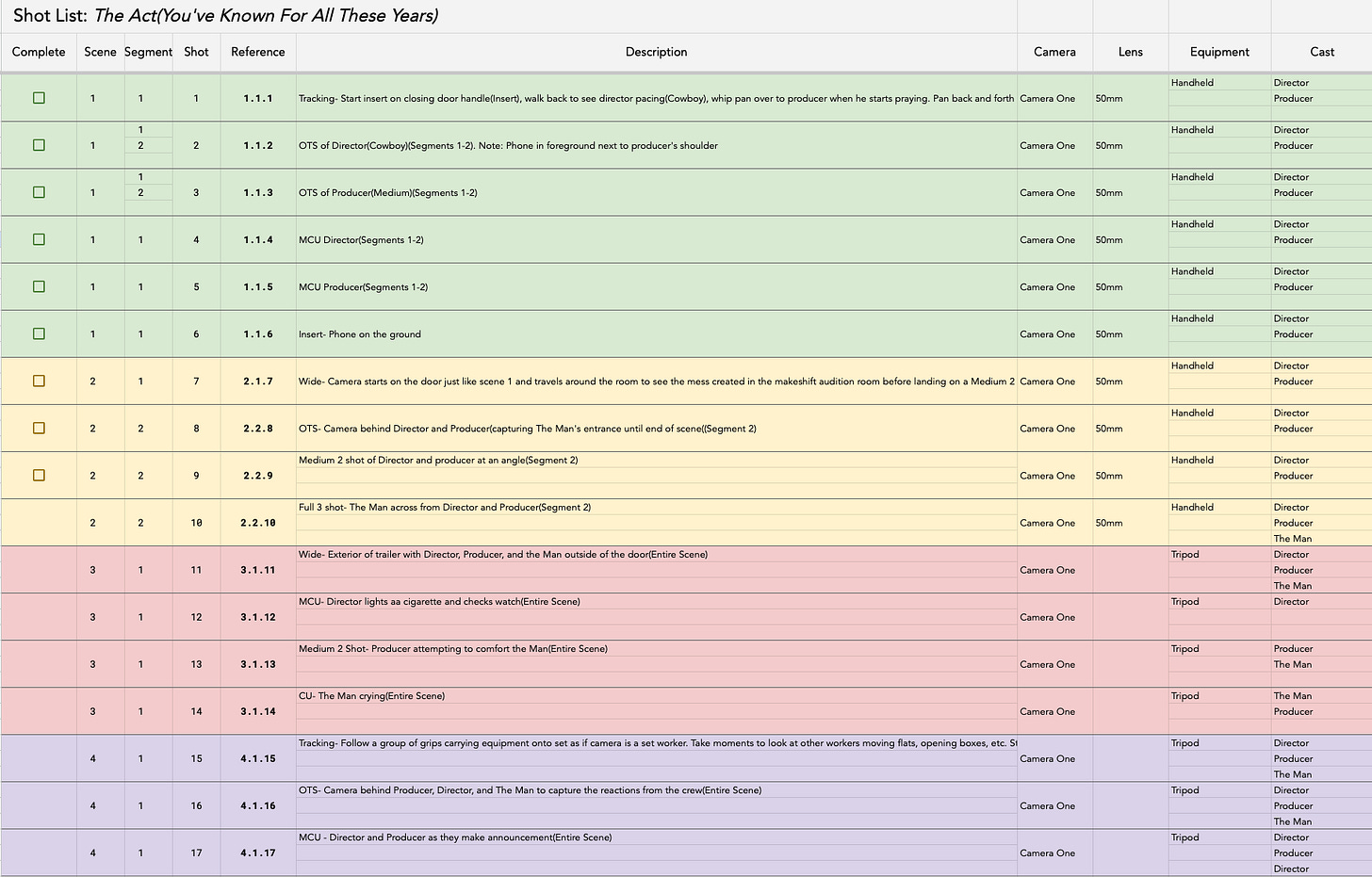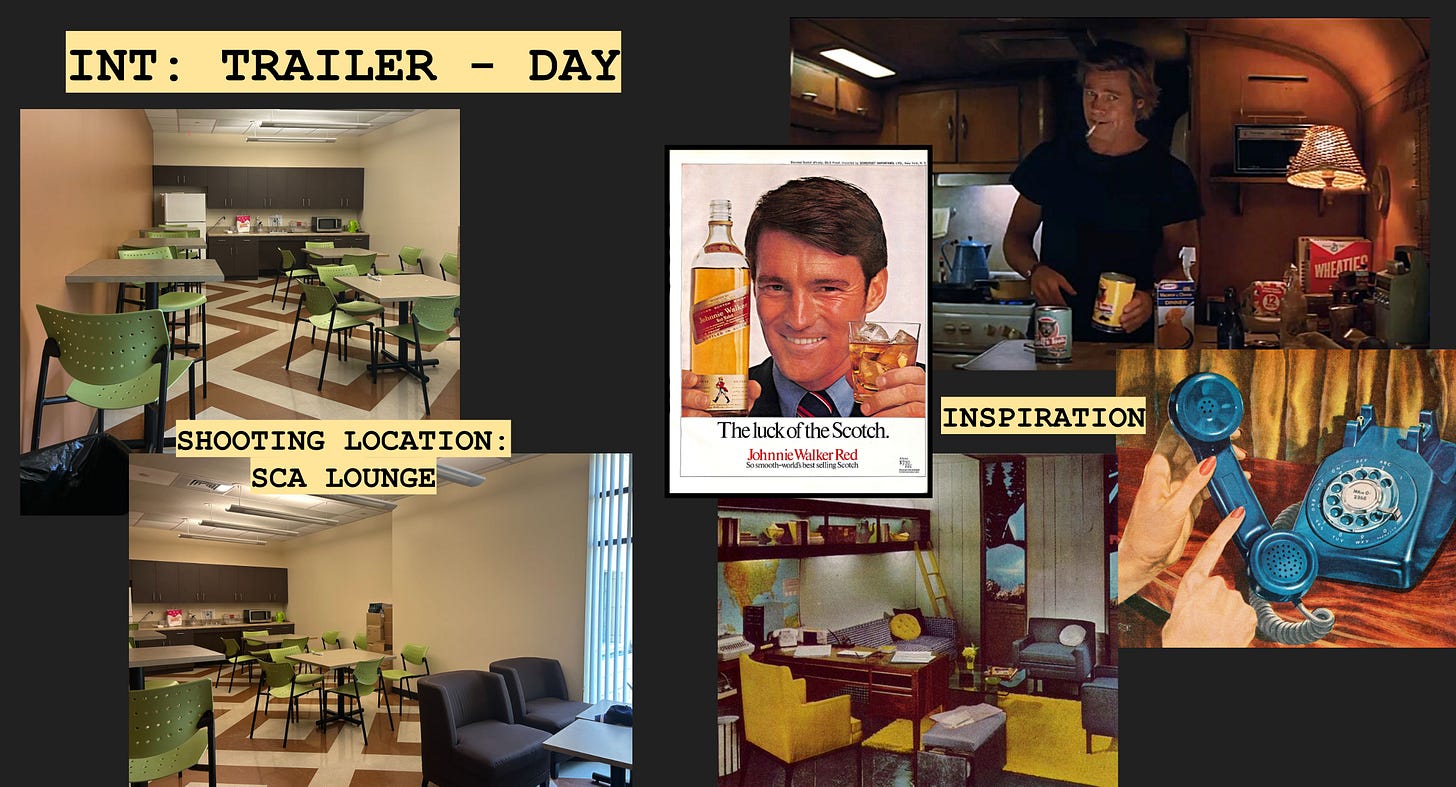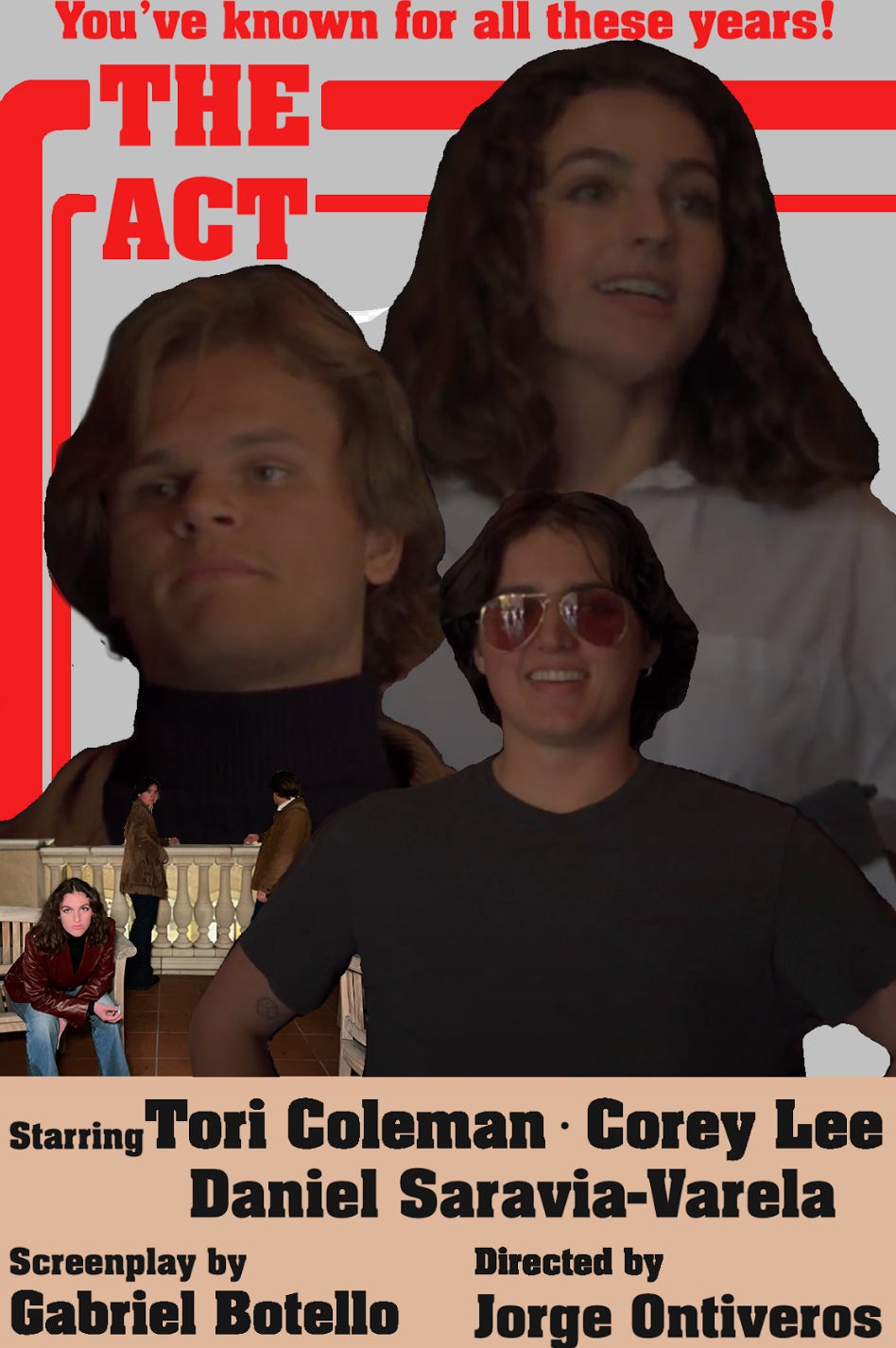Before any film I work on, no matter how large my role is, I always give a listen to the song Movies by Weyes Blood to help inspire me. At the end of each verse Weyes Blood proclaims her love for movies by concluding with, I love the movies put me in a movie and everyone will know me. However the place where I envision myself being recognized within a film is at the end with its credits. I avoid pitching myself for the larger crew roles for film productions as I imagined directors being people with big personalities and yelling at actors. Yet I have found myself in the director’s shoes for multiple projects now and it’s been a role I have learned to love, molding it into something suited for my personality.
There are three stages while filming, pre-production, production, and post-production, with the smaller roles working on a single stage and the main crew roles following the film each step. Before jumping into pre-production involves all the meticulous planning that lifts the film off its feet and hiring people interested. My self-doubt and anxiety caused me to pitch myself usually for smaller roles because I didn’t think I could lead a group of people and the idea of people depending on me was scary. Regardless, I would submit my application to student producers along with a sizzle reel, a one-minute clip of me directing a scene, and stating I am open for any role. Eventually I found out I’d been chosen as director for an upcoming short film and the executive-producer mentioned my comedic tone and style for character monologuing was just what he was looking for. I was ecstatic someone appreciated my filmmaking style and decided to build off my previous work while improving my directing with this short film.
My sizzle reel - recreating and directing a scene from BODIES BODIES BODIES
Throughout pre-production I envision the films creative style based on how I interpret the script and react emotionally. My first read of a script will always include my director notes in the margins and creating a mood board after that can communicate the feeling and general aesthetic I’m trying to capture. This short film followed a famous movie star killed in a stunt gone wrong and the film crew decides they must cover up his death to save their careers. Meta-films and the Mockumentary genre are some of my favorites, so I was hooked on the first read and started thinking of aesthetics I wanted to incorporate. Within my mood board I included scene grabs from my favorite directors works such as Quentin Tarantino and Jason Woliner that reminded me of this script. The producers and assistants would deliver a casting and locations list, while referencing the mood board I’d make my final decisions.
I made my selections for casting by prioritizing representation and diverse acting experience levels. I wanted to incorporate my favorite director’s techniques into my first project so for casting I utilized Sean Bakers unconventional casting styles. Alike Baker casting for his past films through Instagram, I achieved an organic pool of actors with varying experience for my first project. I want to ensure that my films are a learning experience not for just my crew, but for my cast too. I casted actors who’ve been a part of numerous student productions already to play my supporting roles and for my leading roles I included first-time actors. By making this decision, I was able to cast based on how the characters are genuinely written like how Baker casted children from a motel they were shooting at to keep authenticity. In my case, casting first-time actors to play as an inexperienced filmmaking crew allowed them to pour their confusion and curiosity into their role.
Our primary shooting location for this project took place in our cinema school to recreate the feeling of a retro film studio lot and I wanted to make this production approachable to my crew and cast by utilizing the resources and spaces offered to us as students. We started production by recording our final scene and build the story from there. Despite us finally ready for production, I still had my doubts and was anxious to meet the cast for the first time. A fear was micromanaging and not allowing anyone’s input or support for the production. There were a handful of crew members I had supporting me throughout filming, and I wanted to respect their time after dedicating themselves to this project.
The next phase, production, involved me working heavily with the director-photography and writer to secure aesthetics and positioning for camera shots. Normally I would manage all these positions when producing my own shorts throughout high school. However, having the extra support allowed me to maintain consistency with my shots lining up between scenes and more coherent storytelling. I started preparing by researching how directors lead film sets as someone who wants to incorporate their view along with their crew’s. Mother! directed by Darren Aronofsky is a favorite of mine for its unique storytelling and awkward positioning of its actors. Aronofsky was able to achieve these effects by valuing his crew as his family and getting rid of power dynamics on set to create a safe collaborative space. I met frequently with my DP and writer to discuss how we wanted to frame our camera shots and we were able to incorporate all our visions for each scene. I vouched for hand-held and tracking shots as they make audiences feel as though they’re being directly spoken to and recreates the fly-on-the-wall technique.

While busy working with my crew preparing, I’d finally meet the rest of my collaborators when the actors arrive for production. Although I’d been working with already a large team supporting me through each phase of filming, I felt oddly more nervous once the actors arrived. This short film involved three lead characters with nine supporting roles, almost the ammount of people we had for crew. Before greeting the actors, I worried about leaving a bad first impression, so I took a moment to calm myself down. This involved rereading the notes I had written to myself in my iPad and looking at the pictures I copied online of my favorite directors. Admiring the headshots of my role models María Novaro and Crystal Moselle gave me comfort as I remembered the unique styles of directing they originated, providing me with inspiration on how to frame the final scene. Recalling Novaro’s filmmaking style who prioritizes her actors rather than settings, I decided to include this viewpoint into my work. Moselle’s work heavily influenced my first project too since I used cinema verité techniques that required the actors to perform multiple takes with every shot being different.
My first interaction with the actors and crew was at our table read where we reviewed their lines and I gave general notes on how I envisioned the scene to play out and actors to react. I expected the actors to be very stern and not receptive to any feedback I had to say, but I reminded myself of who I was working with as I prioritized a diverse cast of experience levels seeking to grow as actors. Moreover, I met with everyone before the scene to answer questions and make clarifications which allowed me to decide how many takes to shoot. The assistant-director worked with me to create a schedule that allowed us to record all the footage we needed for the day while planning the shoots we would get. Within each shot, I would emphasize a specific emotion or line for the actors to focus on and it’ll produce a slightly different take providing us with a variety of shoots to decide on. Ensuring that everyone’s voice was heard, within each take I offered the main and even supporting roles to act the scene based how they interpreted it rather than using the notes I gave. The ending scene resulted in me choreographing a tracking shot where you can see all the actors in frame, one of the most collaborative shoots of the short film and my favorite scene overall.
Final scene from the first student production I directed at USC
Wrapping up production and recording the last scene we needed to shoot, my crew gave our farewells to the actors as we moved into post-production and finally started editing. Before being overwhelmed by the mass of footage we’ve accumulated over two days of filming, the editing team and I trust the process of the story we’re going to mold. The cinema verité techniques I incorporated affected our editing process by providing us with lots of takes to sift through and constructing the story how we like before having a final cut. Despite having more footage than what we needed, I preferred this outcome as I’d rather have multiple recordings instead of wishing I had filmed something. My first time working with an editor on a production was a huge help as I was having trouble removing scenes and making our film under ten minutes. My editor suggested we start by watching all the footage and making note of timestamps that stick out to us and what we wanted to include. Reviewing the footage, I kept in mind the editing style of Asif Kapadia as he makes decisions about how to frame scenes and what specifically to show, making his fiction movies feel like documentaries.
My editor and I were able to cut our selection of footage in half and we began piecing together the film as a puzzle. Working with my crew throughout the process I was able to incorporate everyone’s ideas seamlessly, but it started to get trickier once we had to finalize the story and select the scenes we wanted to include. I had envisioned the story to be more melancholic and sarcastic in tone mocking the film industry, but my editor had intended on a light-hearted comedic theme. We struggled to make up our minds regarding whose editing fit more with the storyline, so we produced two different cuts of the film for our crew to vote on. The crew were mixed between their votes, but we decided the editors light-hearted theming was better. Eventually I came around and realized that my editors take was more cohesive and with sound design, I was able to use music to end the film with a feeling of sarcasm.
My first student film production was everything I had hoped for and I’m eager to gain more experience in different areas of filmmaking. A goal of mine while creating this film was keeping an all BIPOC student crew as I understand how difficult it can be as students of color navigating a white-male dominated industry. The crew on this film was extremely resourceful and diverse in perspectives that allowed us to create a film that can cater to larger audiences. Throughout my educational career at USC I have been attempting to build up my resume with projects. Now I have directed a film and lead people dedicated to my vision, inspiring me to share more meaningful stories that relate to my background. I plan to follow a similar path to Asif Kapadia who jumps between documentary and fiction genres to produce stories that poke fun at realities but are still representative of the issues community’s encounter. Directing my first short film allowed me to realize how collaborative filmmaking is and I hope to continue blurring the lines and mixing genres in future productions that force viewers to consider the content they consume.



